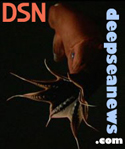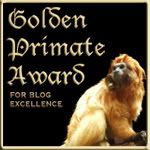Insect Ejaculate Attracts Parasites x2
![]() Kevin and I have been anxiously waiting for PNAS to release this one, since we saw it in Nature
Kevin and I have been anxiously waiting for PNAS to release this one, since we saw it in Nature
A few years ago a Nature Brief Communication described the interesting relationship between the cabbage white butterfly (Pieris brassicae) and the parasitic wasp Trichogramma brassicae. The wasp parasitizes the eggs of the butterfly laid on plants of the cabbage family. The wasp, when given the choice between virgin or mated cabbage white butterfly females, was able to detect and showed a strong preference for the mated females. The authors determined that the wasps used a chemical cue to detect whether the butterfly was virgin or recently mated. The fact that the wasps also chose male butterflies over virgin females gave the team the clue to the source of the chemical cue — the male ejaculate. The male cabbage white butterflies semen carries a compound, benzyl cyanide, which acts as an anti-aphrodisiac on the females, making them less attractive to other males. The benzyl cyanide turns out to be a component of the male body odor as well. The team tested the compound as the signaling cue for the wasp and found that virgin females treated with benzyl cyanide applied to their wings attracted wasps as strongly as mated females. The same compound the males use to increase the chance of their reproductive success has been co-opted by the wasp as an attractant to hitch a ride on gravid females to the site of egg laying, thus significantly increasing the chance of egg parasitization.
The male cabbage white butterflies semen carries a compound, benzyl cyanide, which acts as an anti-aphrodisiac on the females, making them less attractive to other males. The benzyl cyanide turns out to be a component of the male body odor as well. The team tested the compound as the signaling cue for the wasp and found that virgin females treated with benzyl cyanide applied to their wings attracted wasps as strongly as mated females. The same compound the males use to increase the chance of their reproductive success has been co-opted by the wasp as an attractant to hitch a ride on gravid females to the site of egg laying, thus significantly increasing the chance of egg parasitization.


Mated female Pieris brassicae with Trichogramma brassicae wasp (about 0.5mm long) hitching a ride on it's leg.
Additional research from the team published in the Entomologia Experimentalis et Applicata in 2005 indicated that oviposition of eggs by the cabbage white butterfly cause chemical changes in the host plant leaf surface, which cause parasitic wasps to linger. However, the effect was only observed three days after the female had laid a clutch of eggs on the brussel sprout plant, when the host eggs are most suitable for parasitism.
Not only does the male butterfly semen directly attract the wasps, but the benzyl cyanide, which is in the semen as an anti-aphrodesiac, is detectable in mated females' accessory gland secretions. Even when the butterfly does not bring the wasp along, it turns out the benzyl cyanide still increases the chance of the eggs becoming parasitized. While the Nature brief communication described the direct attraction of the wasp to the mated butterfly, the groups newest study published this week at PNAS (in early release) by the same team of researchers has expanded on the effects of the male ejaculate as an attractant to the parasitic wasp. This time there is a third participant in the relationship — the Brussel Sprout plant(Brassica oleracea var. gemmifera), for which the benzyl cyanide pheromone initiates the plants defenses.
 The team of researchers found that the secretions of mated females caused parasitoid wasps (T. brassicae again) to linger on treated sections of leaf, but the attraction effect was time dependent, with no effect at 24 hours and a strong effect after 72 hours. They isolated the amount of benzyl cyanide in the secretions, then tested the effect of the benzyl cyanide in solution at a similar concentration (1ng), as well as much stronger (100ng and 20µg) concentrations. After 72 hours they found, once again, it was the benzyl cyanide from the males' semen that was the cause, with significant results at 100 and 1ng concentrations and no significant reaction to the 20µg concentration. The research found oviposition and benzyl cyanide induced changes in the plants were strongly correlated and they believe several of the transcriptional changes in the leaf surface, caused by the benzyl cyanide in the semen, are responsible for causing the wasp to linger on the leaf.
The team of researchers found that the secretions of mated females caused parasitoid wasps (T. brassicae again) to linger on treated sections of leaf, but the attraction effect was time dependent, with no effect at 24 hours and a strong effect after 72 hours. They isolated the amount of benzyl cyanide in the secretions, then tested the effect of the benzyl cyanide in solution at a similar concentration (1ng), as well as much stronger (100ng and 20µg) concentrations. After 72 hours they found, once again, it was the benzyl cyanide from the males' semen that was the cause, with significant results at 100 and 1ng concentrations and no significant reaction to the 20µg concentration. The research found oviposition and benzyl cyanide induced changes in the plants were strongly correlated and they believe several of the transcriptional changes in the leaf surface, caused by the benzyl cyanide in the semen, are responsible for causing the wasp to linger on the leaf. 

Pieris brassicae egg clutch on cabbage plant (left) and Trichogramma brassicae wasp (about 0.5mm long) on P. brassicae egg.
So the male P. brassicae semen fertilizes the eggs, gives nutrients to the female, causes the female to be more unattractive to other males, causes parasitic wasps to be attracted to the mated females and egg clutches, and causes the wasps to linger on the leaves of the plants which eggs are laid on, but only after 72 hours. What a cocktail that is! It seems that for the cabbage white butterfly this anti-aphrodisiac carries a very high cost indeed.
I wonder what new twists can come next from this research line!?
Literature Cited:
Fatouros, N.E., Bukovinszkine'Kiss, G., Kalkers, L.A., Gamborena, R.S., Dicke, M., Hilker, M. (2005). Oviposition-induced plant cues: do they arrest Trichogramma wasps during host location?. Entomologia Experimentalis et Applicata, 115(1), 207-215. DOI: 10.1111/j.1570-7458.2005.00245.x
Fatouros, N.E., Huigens, M.E., van Loon, J.J., Dicke, M., Hilker, M. (2005). Chemical communication: Butterfly anti-aphrodisiac lures parasitic wasps. Nature, 433(7027), 704-704. DOI: 10.1038/433704a
Fatouros, N.E., Broekgaarden, C., Bukovinszkine'Kiss, G., van Loon, J.J., Mumm, R., Huigens, M.E., Dicke, M., Hilker, M. (2008). Male-derived butterfly anti-aphrodisiac mediates induced indirect plant defense. Proceedings of the National Academy of Sciences DOI: 10.1073/pnas.0707809105



















Nice! Thanks for writing about this--I'm so swamped right now I have no idea when I'm going to read a journal again....
ReplyDeleteHmmm... 20micro is greater than 100ng.. could correct in the blog:)
ReplyDeleteDOH!
ReplyDeleteThanks for that correction. I really need to keep my nano's and micro's straight